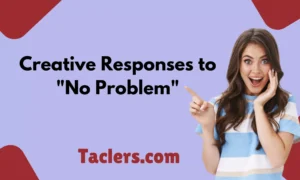Facing peer pressure can be challenging, especially when trying to uphold your own values and boundaries. The key is to respond confidently and assertively.
Here are 30 effective ways to say no to peer pressure, helping you stay true to yourself while navigating social situations.
1. “I’m Not Comfortable with That.”
Explanation:
This response clearly communicates your discomfort with the situation.
Example:
Peer: “Come on, just try it.”
You: “I’m not comfortable with that.”
By saying “I’m not comfortable,” you assert your boundaries politely.
2. “I Prefer Not to.”
Explanation:
A straightforward and polite way to decline without providing extensive justification.
Example:
Peer: “Join us for this activity.”
You: “I prefer not to.”
By saying “I prefer not to,” you maintain control over your choices.
3. “That’s Not My Thing.”
Explanation:
A casual and firm way to express disinterest in the activity or suggestion.
Example:
Peer: “Why don’t you join us?”
You: “That’s not my thing.”
By saying “Not my thing,” you subtly convey that it doesn’t align with your interests.
4. “I’m Good, Thanks.”
Explanation:
A polite refusal that indicates you’re satisfied without further explanation.
Example:
Peer: “Try this with us.”
You: “I’m good, thanks.”
By saying “I’m good,” you gently decline the offer.
5. “I Have Other Plans.”
Explanation:
A way to excuse yourself by implying prior commitments.
Example:
Peer: “Come hang out with us.”
You: “I have other plans.”
By saying “Other plans,” you offer a socially acceptable reason for not participating.
6. “I’m Not Interested.”
Explanation:
A direct way to indicate lack of interest in the suggestion or activity.
Example:
Peer: “Let’s do this together.”
You: “I’m not interested.”
By saying “Not interested,” you clearly express your disinclination.
7. “I’d Rather Not.”
Explanation:
A polite yet firm way to decline without engaging in further discussion.
Example:
Peer: “Join us for this event.”
You: “I’d rather not.”
By saying “I’d rather not,” you politely refuse while maintaining your stance.
8. “It’s Against My Principles.”
Explanation:
A way to express that the suggestion conflicts with your values or beliefs.
Example:
Peer: “Come on, it’s just one time.”
You: “It’s against my principles.”
By saying “Against my principles,” you emphasize your commitment to your values.
9. “I Don’t Feel Like Doing That.”
Explanation:
A casual way to convey that you simply don’t want to participate.
Example:
Peer: “Try this out with us.”
You: “I don’t feel like doing that.”
By saying “Don’t feel like,” you express a lack of desire in a straightforward manner.
10. “I’m Not Up for It.”
Explanation:
A response that suggests you’re not in the mood for the suggested activity.
Example:
Peer: “Join us for this activity.”
You: “I’m not up for it.”
By saying “Not up for it,” you indicate your lack of enthusiasm.
11. “I’m Going to Pass on This One.”
Explanation:
A way to decline politely while indicating you’re choosing to skip the offer.
Example:
Peer: “Participate in this with us.”
You: “I’m going to pass on this one.”
By saying “Pass on this one,” you politely refuse the offer.
12. “I Don’t Think I’ll Be Joining.”
Explanation:
A formal and respectful way to decline an invitation or suggestion.
Example:
Peer: “Come with us now.”
You: “I don’t think I’ll be joining.”
By saying “Don’t think I’ll be joining,” you maintain a respectful tone.
13. “I’m Not Comfortable With That.”
Explanation:
A clear statement expressing that the suggestion makes you uneasy.
Example:
Peer: “Come on, just do it.”
You: “I’m not comfortable with that.”
By saying “Not comfortable,” you assert your discomfort.
14. “I’m Not Going to Participate.”
Explanation:
A direct way to indicate you won’t be taking part in the activity.
Example:
Peer: “Join in with us.”
You: “I’m not going to participate.”
By saying “Not going to participate,” you make your decision clear.
15. “I’m Going to Sit This One Out.”
Explanation:
A casual way to indicate you’ll be abstaining from the activity.
Example:
Peer: “Come and join us.”
You: “I’m going to sit this one out.”
By saying “Sit this one out,” you communicate your choice to abstain.
16. “I Don’t Think That’s for Me.”
Explanation:
A way to express that the activity or suggestion isn’t suited to your tastes.
Example:
Peer: “Try this, it’s fun!”
You: “I don’t think that’s for me.”
By saying “Not for me,” you indicate that it doesn’t fit your preferences.
17. “I’d Prefer to Opt Out.”
Explanation:
A formal way to express your choice to decline the suggestion.
Example:
Peer: “Join us for this activity.”
You: “I’d prefer to opt out.”
By saying “Opt out,” you assert your decision to decline.
18. “I’m Going to Decline.”
Explanation:
A direct and polite way to refuse an offer or suggestion.
Example:
Peer: “Be part of this event.”
You: “I’m going to decline.”
By saying “Going to decline,” you communicate your refusal clearly.
19. “I’m Not Up for It Right Now.”
Explanation:
A way to decline by indicating that you’re not in the mood at the moment.
Example:
Peer: “Come and join us.”
You: “I’m not up for it right now.”
By saying “Not up for it right now,” you suggest a temporary disinterest.
20. “I’m Not Participating in That.”
Explanation:
A clear and direct statement that you won’t be involved in the activity.
Example:
Peer: “Try this with us.”
You: “I’m not participating in that.”
By saying “Not participating,” you make your stance clear.
21. “I’d Rather Not Join.”
Explanation:
A polite way to express that you prefer not to be involved.
Example:
Peer: “Come along with us.”
You: “I’d rather not join.”
By saying “Rather not join,” you convey your preference.
22. “I’m Not Really Feeling That.”
Explanation:
A casual way to indicate you’re not interested in the suggestion.
Example:
Peer: “Let’s do this together.”
You: “I’m not really feeling that.”
By saying “Not really feeling that,” you express a lack of enthusiasm.
23. “I’m Going to Skip This One.”
Explanation:
A simple and clear way to indicate you’ll be passing on the opportunity.
Example:
Peer: “Join us for this.”
You: “I’m going to skip this one.”
By saying “Skip this one,” you politely decline the offer.
24. “I’m Not Interested in That Right Now.”
Explanation:
A formal way to express that you’re not interested in the moment.
Example:
Peer: “Come with us.”
You: “I’m not interested in that right now.”
By saying “Not interested right now,” you set a clear boundary.
25. “I’ll Have to Pass.”
Explanation:
A polite and simple way to refuse the offer or suggestion.
Example:
Peer: “Participate in this with us.”
You: “I’ll have to pass.”
By saying “Have to pass,” you clearly indicate your refusal.
26. “That’s Not Something I Want to Do.”
Explanation:
A straightforward response that communicates your disinterest in the activity.
Example:
Peer: “Try this out.”
You: “That’s not something I want to do.”
By saying “Not something I want,” you make your position clear.
27. “I’m Not Involved in That.”
Explanation:
A formal way to state that you won’t be participating.
Example:
Peer: “Join us now.”
You: “I’m not involved in that.”
By saying “Not involved,” you indicate that it’s not an option for you.
28. “I’m Going to Sit This One Out.”
Explanation:
A casual way to say you’re choosing not to take part in the activity.
Example:
Peer: “Come on, join us.”
You: “I’m going to sit this one out.”
By saying “Sit this one out,” you convey your decision to abstain.
29. “I’m Not Up for That.”
Explanation:
A way to decline by expressing that you’re not interested at the moment.
Example:
Peer: “Try this with us.”
You: “I’m not up for that.”
By saying “Not up for that,” you indicate your disinterest.
30. “I’m Going to Decline This Time.”
Explanation:
A polite way to refuse the current offer while leaving the door open for future opportunities.
Example:
Peer: “Participate in this.”
You: “I’m going to decline this time.”
By saying “Decline this time,” you make your decision clear but open to future possibilities.

Nicholas Clark is a dynamic writer with a knack for capturing the essence of human reactions. With a background in psychology, he delves deep into the science behind every smile, frown, and gasp. His insightful articles on Taclers.com will leave you pondering the fascinating world of human emotions.










